Beijing: Magnificent Millennial Capital
Text by Zhang Jingwen
Beijing boasts a lengthy and culturally profound history,standing as a magnificent testament to the enduring legacy of Chinese civilization.

A bird’s-eye view of the Forbidden City.The Forbidden City is located in the central section of the Beijing Central Axis.The symmetrical royal architectural complex forms a magnificent urban landscape,with resplendent,sparkling glazed tile roofs and grandiose buildings with eye-catching colors.(Photo from CFB)
With a 500,000-year-old history of human activity,a 3,000-year-old history as a city,and an 870-year-old history as a capital,Beijing holds seven World Cultural Heritage sites,boasts nearly 4,000 immovable cultural relics,and houses 5.01 million pieces (sets) of state-owned movable cultural artifacts.
This wealth of historical and cultural treasures has become a “golden calling card” for Beijing.The Central Axis of Beijing,in conjunction with the cultural belts of the Grand Canal,the Great Wall,and the Western Hills and Yongding River,shapes the city’s distinctive layout known as “one axis and three belts.” This ensemble represents the natural and cultural tapestry of Beijing,preserving the memory of urban development.It stands as the very essence of Beijing’s culture as an ancient capital and,by extension,the core of Chinese civilization.
An Axis across Space and Time
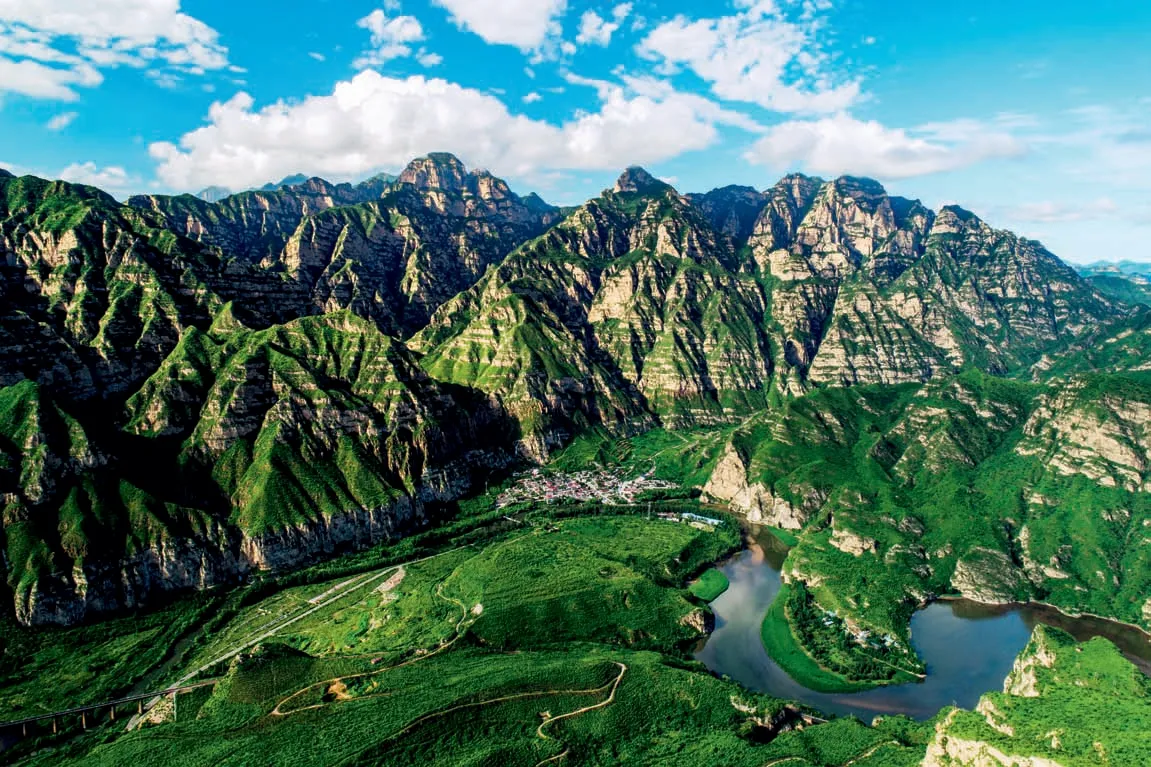
A small village on the banks of the Yongding River Valley in Beijing,August 18,2018.The Yongding River is the largest river in Beijing and is called the “mother river” by locals.(Photo from VCG)
Beijing’s Central Axis,stretching from the Yongding Gate in the south to the Bell Tower in the north,is anchored by significant landmarks such as the Forbidden City and the Temple of Heaven,along with 13 other cultural heritage sites.In harmony with other ancient imperial palaces,sacred ritual structures,historical urban management facilities,national ceremonial and public buildings,and the remnants of central roads,they collectively trace a 7.8-kilometer path that cuts through the outer city,inner city,imperial city,and palace city of old Beijing.This unique axis delineates the distinct backbone of the city.
The Central Axis of Beijing,originating in the 13th century and maturing by the 16th century,has undergone continual refinement,giving rise to a meticulously organized and impressive urban architectural complex.In the northern section,vibrant commercial buildings along the streets distinctly delineate the scale of the central road,infusing it with a lively atmosphere.Moving to the northern part of the central section,straight and wide streets,coupled with symmetrical royal structures,forge a well-designed and magnificent urban panorama.The dazzling glazed tile roofs and resplendent architectural colors in this area are particularly eye-catching.In the southern part of the central section,the architectural ensemble of Tian’anmen Square seamlessly continues the traditional axial planning pattern.Key structures such as Chairman Mao Zedong Memorial Hall,the Great Hall of the People,and the National Museum of China adopt flat roofs and classical colonnades,incorporating traditional Chinese styles of color and decoration to convey distinctive characteristics.Progressing to the southern segment,another bustling commercial street injects vibrancy into Beijing.Meanwhile,the imposing imperial sacrificial structures coalesce with natural landscapes,creating a solitary and mysterious visual tableau.This axis stands as the principal narrative thread,showcasing the historical and cultural significance of Beijing.It also functions as a crucial conduit for the world to comprehend the unfolding story of Chinese civilization.
In recent years,driven by preservation initiatives along the Central Axis,Beijing has rigorously embraced the mandate of “no more dismantling the old city.” Substantial efforts have been dedicated to the protection and restoration of the Central Axis.The landscapes flanking the Central Axis,as well as the preserved structures like guildhalls and historical residences nestled in the alleys and lanes,have not only been meticulously restored to their original allure but have also embraced a vibrant form of inheritance.
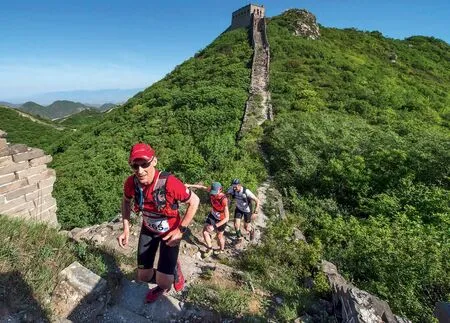
From May 16 to 20,2016,79 long-distance running enthusiasts from France participated in the “Great Wall Marathon,”giving them a chance to experience the Great Wall of China.(Photo by Guo Shasha/China Pictorial)
A Canal Still
The Grand Canal is the world’s most extensive and longest canal,serving as a vital nexus for cross-regional and multi-ethnic interaction,exchange,and cultural fusion within China.Positioned at the northern terminus of the Grand Canal,Beijing has been instrumental in propelling its development.Concurrently,as China’s economic and cultural backbone,the Grand Canal had played a pivotal role in fostering the prosperity of Beijing.
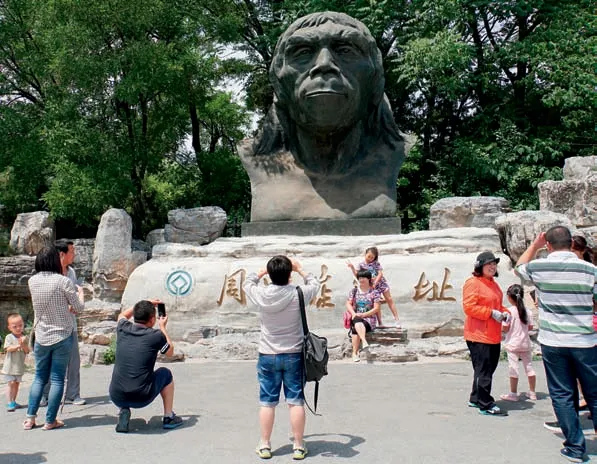
Tourists visit the Zhoukoudian Peking Man Site in Beijing,June 10,2017.In 1929,Chinese archaeologist Pei Wenzhong excavated the first skull of “Peking Man” at this site.(Photo from VCG)

Tourists enjoy themselves at Fragrant Hills Park in Beijing,October 31,2016.As an imperial garden with a long history and profound culture,Fragrant Hills Park has now become one of the best places in Beijing to appreciate autumn maple leaves.(Photo from VCG)
In 2014,the Grand Canal of China secured UNESCO World Heritage status,solidifying its position as Beijing’s seventh World Cultural Heritage site.In recent years,Beijing has undertaken an in-depth exploration of the cultural richness embedded in the Grand Canal,enhancing the allure of canal culture.Grand Canal Origin Park based at the Baifuquan Site was established in Baifu Village of Changping District.The unearthing of the ancient town of Luxian in Tongzhou District has traced the history of Tongzhou’s urban development back over 2,000 years.Currently,construction of a Luxian ancient town site park,featuring a museum and authentically restored historical sites,is in progress.The core section of the Grand Canal in Beijing,or the Tongzhou Grand Canal,has been transformed into a cultural tourism hot spot.Central Green Forest Park and the “three major cultural facilities,” including a museum,a theater and a library,have been successively opened to the public.
On April 28,2022,the Beijing-Hangzhou Grand Canal achieved a historic milestone by reopening its entire waterway for navigation after a century.Then,on June 24,the 62-kilometer section stretching from Beijing to Hebei officially became navigable,bringing the millenniaold canal back to life.Winding through Beijing,the Grand Canal’s remnants nourish an 82-kilometer stretch with cultural heritage sites.Combined with the emergence of various cultural facilities,these sites create a seamless continuum,where the ancient and the modern coalesce,giving rise to the Grand Canal cultural belt and kindling the canal’s rejuvenation.
The Great Wall
The Great Wall,celebrated globally for its immense scale and profound history,serves as a quintessential representation of the spirit of the Chinese nation.Stretching across rugged mountains,the Beijing section of this monumental structure spans an impressive 520.77 kilometers.
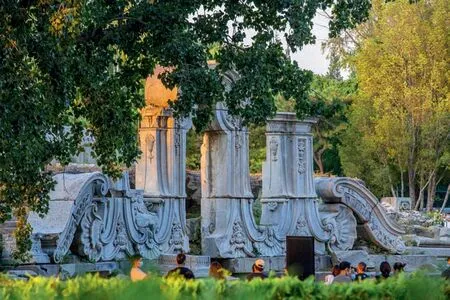
Tourists visit Yuanmingyuan Park (the Old Summer Palace) in Beijing,September 19,2020.Yuanmingyuan was once hailed as the “Garden of Gardens.” In 1988,the ruins of the Old Summer Palace were officially opened to the public.(Photo from VCG)
The central theme of Great Wall culture revolves around its preservation and utilization.In 2019,the Beijing Great Wall Cultural Belt Protection and Development Plan (2018-2035) was unveiled,signaling a heightened commitment to safeguarding and restoring the Great Wall segments in Beijing.Notably,in 2020,the inaugural national base for the protection and restoration of the Great Wall was established at the Jiankou Great Wall in Huairou District,serving as a model section for the nationwide restoration of brick-and-stone Great Wall segments.In December 2021,the Construction and Protection Plan for the Great Wall National Cultural Park (Beijing Section)was disclosed,outlining the construction and protection goals for the Beijing Great Wall National Cultural Park.Since the plan’s release,a series of activities celebrating the Great Wall’s cultural heritage have been planned while renovation and enhancement of the China Great Wall Museum and restoration of the Jiankou Great Wall have been steadily advancing.Introduction of diverse cultural events,creative products inspired by the Great Wall,and the launch of various cultural and tourism activities have breathed new vitality into the ancient marvel.
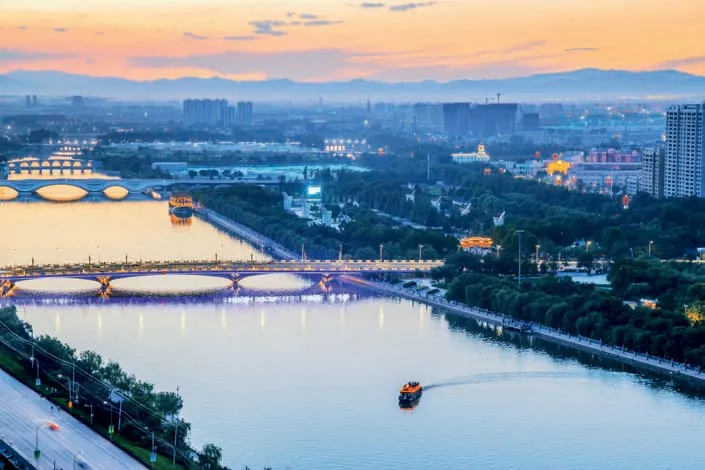
An aerial view of the northern starting point of the Beijing-Hangzhou Grand Canal,July 4,2021.(Photo from VCG)
By 2035,this park,devoid of any enclosures,is anticipated to be completed.At that point,the accessible length of the Great Wall under management is expected to cover around 10 percent of the total length in Beijing.The Great Wall has become a cultural belt that vividly reflects the rich tapestry of diverse cultures,economic interdependence,and emotional closeness among various ethnic groups across China’s history.Spanning millennia,its continuous protection and development in cultural tourism is reviving its majestic beauty preserved through enduring historical transformations.

